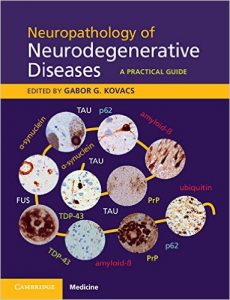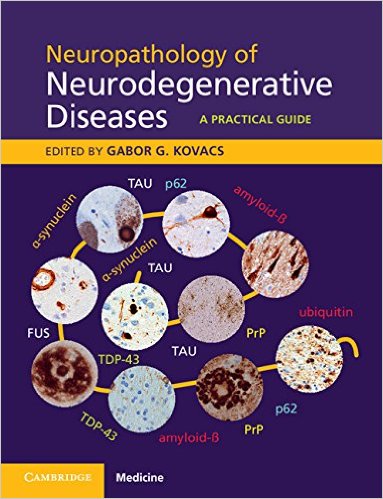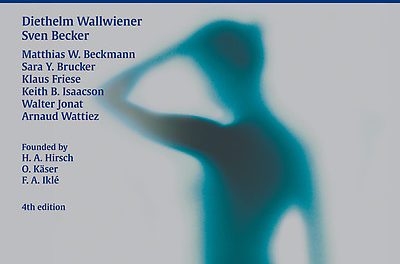 Editor: Gabor G. Kovacs, MD
Editor: Gabor G. Kovacs, MD
Publisher: Cambridge University Press – 309 pages
Book Review by: Nano Khilnani
This book has been developed for medical specialists and trainees in involved in diagnosing neuropathologic diseases and treating patients who have them, including many forms and types of dementia. It is an excellent guide particularly on neurodegenerative diseases. It is based on the proteinopathy concept, which has influenced classification of such diseases and provides new strategies for therapy. This book discusses, among other subjects, the following:
- Advances in genetics in recent years
- Diagnostic methods and pitfalls
- Fundamentals of clinical symptomology
- Immunostaining protocols
- Modern molecular techniques
- Morphological classification
Nineteen people including the editor, from eight countries – Austria, Finland, France, Hungary, Spain, Sweden, the United Kingdom, and the United States – contributed to this book by writing or co-writing its 18 chapters listed below. They are MDs and / or PhDs mainly in neurology and/or pathology, as well as in genetics, immunology, laboratory medicine, and neuropathology.
The titles of the chapters in this book are:
- Introduction: classification of neurodegenerative diseases
- Clinical aspects of dementia
- Clinical aspects of movement disorders
- Ethical, health and safety considerations
- Practical approach to diagnosis: sampling and basic stains
- Molecular methods
- Alzheimer’s disease
- Tauopathies
- Synucleinopathies
- Human prion diseases
- Neurodegenerative diseases linked to trinucleotide repeats
- Amyotrophic lateral sclerosis and frontotemporal lobar degeneration
- Other neurodegenerative conditions I: hereditary amloid angiopathies
- Other neurodegenerative conditions II: familian encephalopathy with neuroserpin inclusion bodies
- Other neurodegenerative conditions III: hereditary ferritinopathies
- Other neurodegenerative conditions IV: neurodegeneration with brain iron accumuolation
- Concomitant pathologies I: cerebrovascular diseases
- Concomitant pathologies II: neurodegenerative conditions
You as purchaser of this book can access online the entire contents of this book: text and images, which are fully searchable. Here’s how you set up your Cambridge Books Online account:
- Go to http://ebooks.Cambridge.org/register and Click Register
- Enter your details and click Submit
- You will receive a confirmation email. Please follow the instructions in that email to activate your registration
To activate your access code using your Cambridge Books Online account:
- Scratch off the Activation Code found on the inside from cover of your book
- Go to http://ebooks.Cambridge.org and click Login, followed by User Login
- Log in using your Cambridge Books Online account
- Click on My Bookshelf
- Enter your Activation Code and click on Activate Now
- Click on the book’s title to view the book’s content
Among other diagnostic methods in neuropathology, it covers the now-widespread application of immunohistochemistry. This valuable book provides diagnostic algorithms and particularly important are personal insights from its experienced and knowledgeable specialists who have authored its chapters, including how brain tissue should be handled when diagnosing disease.
An important feature in this book is the overview and perspective it provides in chapter 1, Classification of neurodegenerative diseases, written by the editor himself, Dr. Gabor G. Kovacs. Take a look at the beautiful chart he has provided on page 5, which gives you a sort of bird’s eye view, and read the caption below it.
Another crucial portion of the book is chapter 7, Alzheimer’s disease, which affects increasing numbers of people. Also, take a look at the images of brain tissue and read the captions on pages 59, 60 and 61. As a matter of fact, lots of full-color images abound in this treasure of a book. This is really a must-have resource in the rapidly-growing field of study on neurologic disease.
Editor:
Gabor G. Kovacs, MD, PhD is an Associate Professor in the Institute of Neurology at the Medical University of Vienna, in Vienna, Austria







